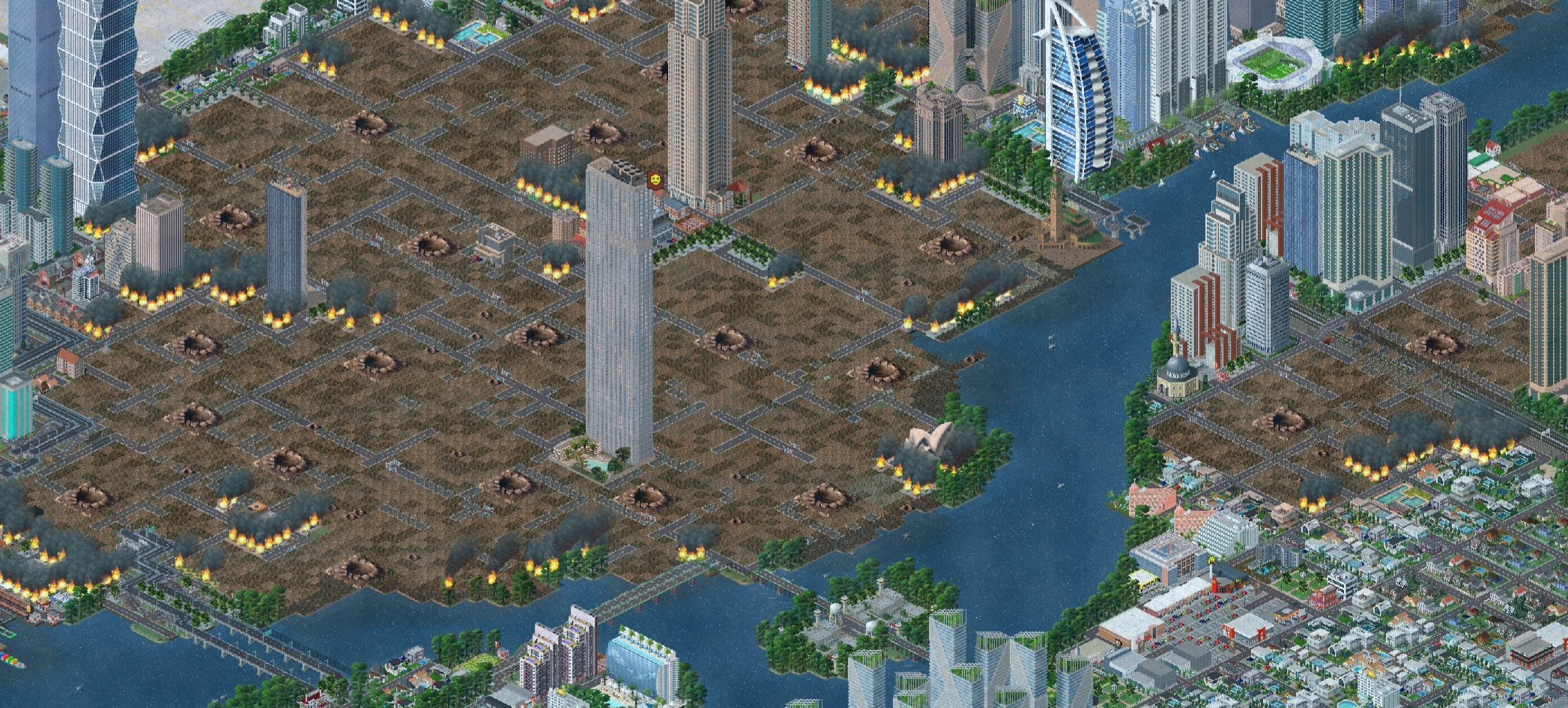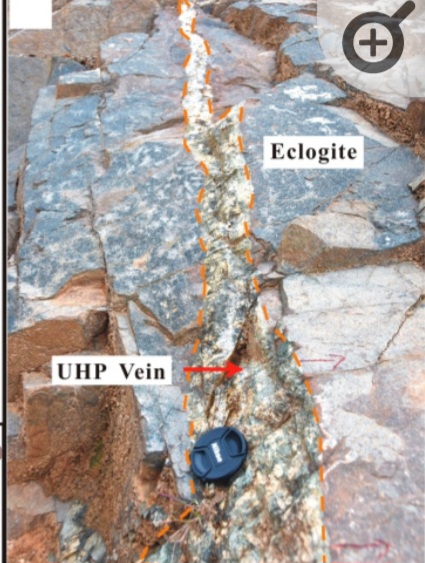It looks like you're using an Ad Blocker.
Please white-list or disable AboveTopSecret.com in your ad-blocking tool.
Thank you.
Some features of ATS will be disabled while you continue to use an ad-blocker.
share:
a reply to: cooperton
Debunked.
How did the koalas and kangaroos get from Australia to Mesopotamia?
How did the sloth and the anacondas get from South America to Mesopotamia?
How did the polar bears and penguins get from the arctic and Antarctica to Mesopotamia?
Debunked.
How did the koalas and kangaroos get from Australia to Mesopotamia?
How did the sloth and the anacondas get from South America to Mesopotamia?
How did the polar bears and penguins get from the arctic and Antarctica to Mesopotamia?
edit on 1/11/2024 by FlyersFan because: (no reason given)
Aboriginal Australians.
From 50,000 bc to present. No flood wipeout in 2400c
Oldest Culture and Civilizations
DNA Study Finds Aboriginal Australians Worlds Oldest Civilization
From 50,000 bc to present. No flood wipeout in 2400c
Oldest Culture and Civilizations
Although the people who settled in Mesopotamia are often credited as the first civilization, new research shows that Aboriginal Australians are one of the oldest known civilizations on Earth.
The Aborigines can trace their ancestries back to about 75,000 years ago, but became a distinct genetic group around 50,000 years ago.
It is believed that this ancient group of Aboriginal Australians first settled in Australia between 40,000 – 31,000 years ago. They are the direct ancestors of today’s remaining Aboriginal tribes and their culture has largely remained the same.
DNA Study Finds Aboriginal Australians Worlds Oldest Civilization
San People of South Africa
100,000 BC to present
Not wiped out by any flood in 2400BC
Oldest Civilizations
Genetics of the San People
100,000 BC to present
Not wiped out by any flood in 2400BC
Oldest Civilizations
The San People of Southern Africa trace their history directly to ancient peoples who lived around 140,000 to 100,000 years ago. In fact, the San are the direct descendants of one of the original ancestral human groups (haplogroup), making the San the oldest civilization in the world.
In the past, the San were semi-nomadic hunter-gatherers, but today many San work as farm laborers, run nature conservancies, and other various small jobs as hunting and gathering alone is no longer sustainable.
Recent archaeological finds have uncovered the oldest known ritual ceremonies, which have been been attributed to the San.
Archaeologists discovered 70,000-year old spearheads in a cave in the Tsodilo Hills of Botswana that were sacrificed to the python. The Tsodilo Hills are also notable for being the site of the world’s largest concentration of rock paintings. This art was also made by ancient San people.
Genetics of the San People
originally posted by: JohnTChance
As a Christian, if it’s really the truth you seek I suggest praying to God for those answers. Nothing anyone on the internet says can help you with that.
We already know the answer. The flood story isn't literal truth and it didn't happen. We know where it came from ... other pagan cultures that the Hebrews took the story from and reworked to adapt to their own.
originally posted by: JohnTChance
a reply to: FlyersFan
As a Christian, if it’s really the truth you seek I suggest praying to God for those answers. Nothing anyone on the internet says can help you with that. And no that’s not a cop out. It’s essential to the Christian faith.
Yes, it is a cop out and that's the same deflection tactics I've heard from the supposed faithful leaders of the religion since my childhood. My questions were never answered.
a reply to: quintessentone
All I will say is ask different questions with not only an open mind but an open heart. Every person’s journey to salvation is different.
All I will say is ask different questions with not only an open mind but an open heart. Every person’s journey to salvation is different.
originally posted by: JohnTChance
a reply to: quintessentone
All I will say is ask different questions with not only an open mind but an open heart. Every person’s journey to salvation is different.
How do you know my heart is not open? Judge not lest you be judged.
edit on q00000036131America/Chicago2323America/Chicago1 by quintessentone
because: (no reason given)
a reply to: JohnTChance
You don't need to guess you can ask.
If Yahweh decided to drown everything and everyone you know and love for some seemingly unknowable reason.
Are you telling me you would not hold him in contempt or responsible for his actions?
See this is the reason why Biblical accounts like Noah's Ark should be taken with a large pinch of salt.
Because benevolent omnipotent deities would not go around doing such a thing to their chosen creation.
And any God that chooses to implement such a malevolent mass genocidal scheme most certainly does not deserve your faith and attendance, unless of course through fear.
You don't need to guess you can ask.
If Yahweh decided to drown everything and everyone you know and love for some seemingly unknowable reason.
Are you telling me you would not hold him in contempt or responsible for his actions?
See this is the reason why Biblical accounts like Noah's Ark should be taken with a large pinch of salt.
Because benevolent omnipotent deities would not go around doing such a thing to their chosen creation.
And any God that chooses to implement such a malevolent mass genocidal scheme most certainly does not deserve your faith and attendance, unless of course through fear.
edit on 11-1-2024 by andy06shake because: (no reason given)
a reply to: andy06shake
Lol. Depends how much of a mandala it all is.
It's also funny if you make Yahweh Bipolar-1.
Only if that was the case, God would get really into creating the world and then abruptly stop caring on day 2 or 3.
God created the Heaven and Earth, and then he lay in bed for a week, and later just copped out with animo acids in molecular clouds.
But it could be like a Sim City type game. And God can make endless creations, does not view the "sims" as anything more than data, and occasionally returns to run disaster scenarios.

omnipotent deities would not go around doing such a thing to their chosen creation.
Lol. Depends how much of a mandala it all is.
It's also funny if you make Yahweh Bipolar-1.
Only if that was the case, God would get really into creating the world and then abruptly stop caring on day 2 or 3.
God created the Heaven and Earth, and then he lay in bed for a week, and later just copped out with animo acids in molecular clouds.
But it could be like a Sim City type game. And God can make endless creations, does not view the "sims" as anything more than data, and occasionally returns to run disaster scenarios.

edit on 11-1-2024 by Degradation33 because: (no reason given)
originally posted by: FlyersFan
a reply to: cooperton
Debunked.
You know most of the others admitted there is water beneath the crust right? You're showing your lack of objectivity.
"Our research presents a method that more accurately determines the quantitative composition of ultrahigh-pressure (UHP) fluid [high H2O (~40 wt.%) and solute (~60 wt.%) contents] "
www.ncbi.nlm.nih.gov...
It's not like you have to admit Noah's flood happened, you just have to admit that plenty of water beneath the crust has been found scientifically.
edit on 11-1-2024 by cooperton because: (no reason given)
originally posted by: cooperton
You know most of the others admitted there is water beneath the crust right?
NOT liquid water and not in the amounts you are claiming.
Debunked.
You're showing your lack of objectivity.
OMG .. coming from you ... that's a freak'n riot!
How did the koalas and kangaroos get from Australia to Mesopotamia?
How did the sloth and the anacondas get from South America to Mesopotamia?
How did the polar bears and penguins get from the arctic and Antarctica to Mesopotamia?
OBJECTIVITY cooperton. OBJECTIVITY.
Answer the questions. Good luck with that.
SPAM Removed
edit on 11-1-2024 by Zarniwoop because: (no reason given)
a reply to: cooperton
The title of that paper "Supercritical fluid in deep subduction zones as revealed by multiphase fluid inclusions in an ultrahigh-pressure metamorphic vein"
They are not talking about the whole mantle, they are talking about one vein in a subduction zone.
I'd say your claim has been debunked.
The title of that paper "Supercritical fluid in deep subduction zones as revealed by multiphase fluid inclusions in an ultrahigh-pressure metamorphic vein"
They are not talking about the whole mantle, they are talking about one vein in a subduction zone.
I'd say your claim has been debunked.
a reply to: hoazun
Just a heads up hoazun.
That links spurious as feck and misleading.
Redirects to "https://www.mytoom.com/politics/" with what some peeps are going to find rather offensive pics.
Edit: Reported as spam or something dodgy, you did the same in other threads.
Just a heads up hoazun.
That links spurious as feck and misleading.
Redirects to "https://www.mytoom.com/politics/" with what some peeps are going to find rather offensive pics.
Edit: Reported as spam or something dodgy, you did the same in other threads.
edit on 11-1-2024 by andy06shake because: (no reason
given)
Chinese History. Unbroken. Same language. Same culture. Same gods.
The population grew and expanded during this time .. it wasn't wiped out in 2400bc.
Timeline of Chinese History
The Longshan period of Chinese history - The Longshan culture, also sometimes referred to as the Black Pottery Culture, was a late Neolithic culture in the middle and lower Yellow River valley areas of northern China from about 3000 to 1900 BC.
Information on the Longshan culture
World History Longshan culture
Longshan Information
The population grew and expanded during this time .. it wasn't wiped out in 2400bc.
Timeline of Chinese History
The Longshan period of Chinese history - The Longshan culture, also sometimes referred to as the Black Pottery Culture, was a late Neolithic culture in the middle and lower Yellow River valley areas of northern China from about 3000 to 1900 BC.
Information on the Longshan culture
World History Longshan culture
By around 1700 BCE the culture had morphed with other regional cultures into a wider Chinese Bronze Age culture.
Longshan Information
Throughout this period, the population shifted from isolated and scattered small villages to larger settlements, and agriculture became more widespread in the valleys. .... Between 2600 and 2000 BCE, there was a period of expansion for many communities that sought to increase their territories. ... Some of the larger towns boasted populations of up to 40,000 people living within their fortified walls. With the emergence of subsequent cultures and growing populations, these walls were expanded, ...
a reply to: daskakik
Actually, you first need to understand "Multiphase Fluid Inclusions", and where, and how those occur.
Like you need to understand this:
Sometimes the fluid is immiscible, and contains both petroleum and water.

[Multi-phase inclusion in quartz from Pakistan, with yellow petroleum, small amount of water in the lower right part, solid bitumen particles and vapor bubble. Field of view 7 mm.]

Like what happens if take a hammer to this crystal?
Do you recover the oil?
This may help to answer that.
www.hindawi.com...
Of course none of these subduction zones and metamorphic veins are anywhere near the transition zone, where the 3x amount of "water" is.
This is all about subduction zone supercritical fluids affect metamorphic veins in eclogite. Silicate-H20 systems, Rock-H20 systems and happens much closer to the surface.
Eclogite can exist down to 300 km, but still well below the temperatures of the transition zone, which once more is where all the vast amount of water is "absorbed in crystal".

It's cool, and if you don't know anything about rock composition, it can appear to validate one's argument.
Actually, you first need to understand "Multiphase Fluid Inclusions", and where, and how those occur.
Like you need to understand this:
The typical multiphase solid–fluid inclusions in (location) are considered as supercritical fluid or its remnants.
Sometimes the fluid is immiscible, and contains both petroleum and water.
Inclusions with more than one different daughter mineral phases, plus water and vapor bubble. In this case, two or more different dissolved compounds are precipitated from the trapped fluid inside the inclusion cavity.
Two immiscible liquids, plus solid phase and gas bubble. For example, in many inclusions containing water and petroleum, also solid carbon hydrates can be observed (bitumen particles), floating in the water, in addition to the gas bubble.

[Multi-phase inclusion in quartz from Pakistan, with yellow petroleum, small amount of water in the lower right part, solid bitumen particles and vapor bubble. Field of view 7 mm.]

Like what happens if take a hammer to this crystal?
Do you recover the oil?
This may help to answer that.
www.hindawi.com...
Of course none of these subduction zones and metamorphic veins are anywhere near the transition zone, where the 3x amount of "water" is.
This is all about subduction zone supercritical fluids affect metamorphic veins in eclogite. Silicate-H20 systems, Rock-H20 systems and happens much closer to the surface.
Eclogite can exist down to 300 km, but still well below the temperatures of the transition zone, which once more is where all the vast amount of water is "absorbed in crystal".

It's cool, and if you don't know anything about rock composition, it can appear to validate one's argument.
edit on 11-1-2024 by Degradation33
because: (no reason given)
Ancient Egyptian Population Increases
Same language. Same culture. Same gods.
It isn't wiped out in 2400bc
Britannica - Ancient Egypt
Estimating Ancient Egyptian Population
Same language. Same culture. Same gods.
It isn't wiped out in 2400bc
Britannica - Ancient Egypt
The size of the population has been estimated as having risen from 1 to 1.5 million in the 3rd millennium BCE to perhaps twice that number in the late 2nd millennium and 1st millennium BCE.
Estimating Ancient Egyptian Population
2500 BC (Late Old Kingdom) - Increase in cultivable land in the Delta (to about 9,000 sq. km, or 3,475 sq. miles) and continued increase in population density in all areas.
Total population of Egypt = c. 1.6 million
1800 BC (height of the Middle Kingdom) - Agricultural efforts by Middle Kingdom kings significantly increased the amount of cultivable land and density of occupation in the Faiyum and in the Delta, together with a slight rise in population density in all areas.
Total population of Egypt = c. 2 million.
edit on 1/11/2024 by FlyersFan because: (no reason given)
new topics
-
Austin sends Fighter Squadrons, Tanker Aircraft to the Middle East
World War Three: 6 hours ago -
Diddy's ex Jennifer Lopez urges Americans to trust her about Kamala Harris
Jokes, Puns, & Pranks: 6 hours ago -
Concerning data with regards to Turbo Cancer
Diseases and Pandemics: 7 hours ago -
Trump thinks Liz Cheaney should be shot in the face?
US Political Madness: 8 hours ago
top topics
-
Final jobs report before Nov 5th is a bad one lowest since Dec 2020
US Political Madness: 15 hours ago, 17 flags -
CNN now has a pay wall
Other Current Events: 12 hours ago, 14 flags -
Pentagon announces new military aid package for Ukraine
World War Three: 12 hours ago, 14 flags -
Trump thinks Liz Cheaney should be shot in the face?
US Political Madness: 8 hours ago, 14 flags -
Concerning data with regards to Turbo Cancer
Diseases and Pandemics: 7 hours ago, 9 flags -
Tucker Carlson Shares Amazing Story: "I Was Mauled By a Demon"
Paranormal Studies: 13 hours ago, 8 flags -
Diddy's ex Jennifer Lopez urges Americans to trust her about Kamala Harris
Jokes, Puns, & Pranks: 6 hours ago, 7 flags -
Austin sends Fighter Squadrons, Tanker Aircraft to the Middle East
World War Three: 6 hours ago, 6 flags -
Maetaquest 3S
Video Games: 15 hours ago, 3 flags
active topics
-
President BIDEN Approved Omitting from the Transcript That He Called Trump Supporters GARBAGE.
2024 Elections • 24 • : WeMustCare -
Trump thinks Liz Cheaney should be shot in the face?
US Political Madness • 63 • : WeMustCare -
Dr. Jack Kruse
Whistle Blowers and Leaked Documents • 55 • : Astrocometus -
Concerning data with regards to Turbo Cancer
Diseases and Pandemics • 12 • : Cloudbuster1 -
CNN now has a pay wall
Other Current Events • 28 • : boatguy12 -
Early voting results
2024 Elections • 17 • : Xtrozero -
Tucker Carlson Shares Amazing Story: "I Was Mauled By a Demon"
Paranormal Studies • 35 • : WeMustCare -
Who would you invite to a historical dinner party?
General Chit Chat • 18 • : AlexandrosOMegas -
Pentagon announces new military aid package for Ukraine
World War Three • 14 • : rickymouse -
Resources for Tracking EARLY VOTES As They Are Cast Nationwide - 2024 Presidential Election.
2024 Elections • 36 • : WeMustCare
